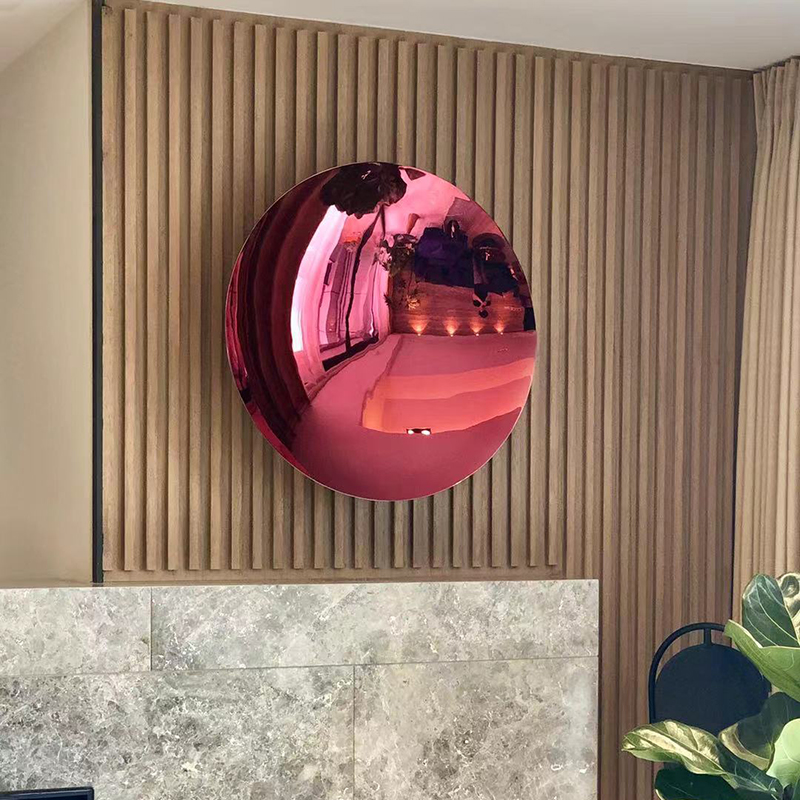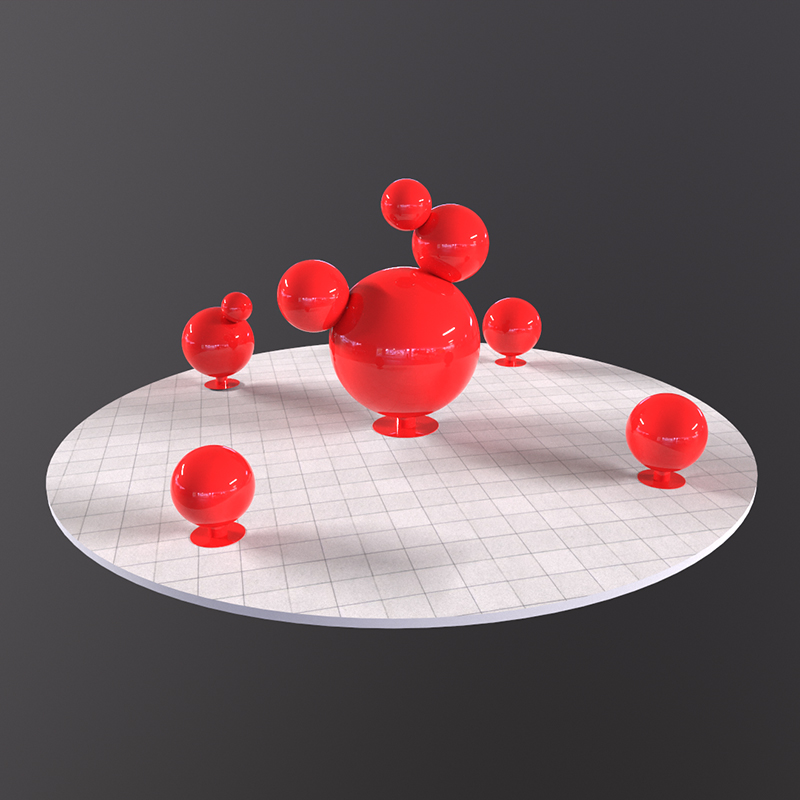Kapoor’s pieces are frequently simple, curved forms, usually monochromatic and brightly coloured. Most often, the intention is to engage the viewer, producing awe through their size and simple beauty, evoking mystery through the works’ dark cavities, tactility through their inviting surfaces, and fascination through their reflective facades. His early pieces rely on powder pigment to cover the works and the floor around them. Such use of pigment characterised his first high profile exhibit as part of the New Sculpture exhibition at the Hayward Gallery London in 1978. This practice was inspired by the mounds of brightly coloured pigment in the markets and temples of India. His later works are made of solid, quarried stone, many of which have carved apertures and cavities, often alluding to, and playing with, dualities (earth-sky, matter-spirit, lightness-darkness, visible-invisible, conscious-unconscious, male-female and body-mind). His most recent works are mirror-like, reflecting or distorting the viewer and surroundings. The use of red wax is also part of his current repertoire, evocative of flesh, blood and transfiguration.
Kapoor has produced a number of large works, including Taratantara (1999), a 35 metre-tall piece installed in the Baltic Flour Mills in Gateshead, England before renovation began there and Marsyas (2002), a large work of steel and flesh-coloured PVC that reached end to end of the 3,400 square foot Turbine Hall of Tate Modern. A stone arch by Kapoor is permanently placed at the shore of a lake in Lødingen in northern Norway. In 2000, one of Kapoor’s works, Parabolic Waters, consisting of rapidly rotating coloured water, was shown outside the Millennium Dome in London. In 2001, Sky Mirror, a large mirror piece that reflects the sky and surroundings, was commissioned for a site outside the Nottingham Playhouse in England. In 2004, Cloud Gate, a 110-ton stainless steel sculpture, was unveiled at Millennium Park in Chicago. In the Fall of 2006, a second Sky Mirror, was installed in Rockefeller Center, New York. Soon to be completed are a memorial to the British victims of 9/11 in New York, [5] and the design and construction of two subway stations in Naples, Italy.[6] Kapoor has also been commissioned to produce five pieces of public art by Tees Valley Regeneration (TVR)[7] collectively known as the “Tees Valley Giants”[8]
Cloud Gate, Millennium Park, Chicago, 2004
In 2007, he showed Svayambh (which can be roughly translated as ‘self-generated’), a 1.5 metre carved block of red wax that moved on rails through the Nantes Musée des Beaux-Arts as part of the Biennale estuaire; this piece was shown again in a major show at the Haus Der Kunst in Munich and in 2009 at the Royal Academy in London. Kapoor’s recent work increasingly blurs the boundaries between architecture and art.
In 2008, the Institute of Contemporary Art in Boston exhibited Kapoor’s first U.S. mid-career survey. [9] In the same year, Kapoor created the sculpture “Memory” in Berlin and New York for the Guggenheim Foundation.
In 2009 Anish Kapoor became the first Guest Artistic Director of Brighton Festival. As well as informing the content of the festival as a whole, Kapoor installed 4 significant sculptures for the duration of the festival; Sky Mirror at Brighton Pavilion gardens, C-Curve at The Chattri, Blood Relations (a collaboration with author Salman Rushdie) and 1000 Names, both at Fabrica. He also created 2 new works: a large site-specific work entitled ‘The Dismemberment of Jeanne d’Arc’ and a performance based installation entitled ‘Imagined Monochrome’. The public response was so overwhelming that police had to re-divert traffic around C Curve at the Chattri and exercise crowd control.
When asked if engagement with people and places is the key to successful public art, Kapoor said,
“ I’m thinking about the mythical wonders of the world, the Hanging Gardens of Babylon and the Tower of Babel. It’s as if the collective will comes up with something that has resonance on an individual level and so becomes mythic. I can claim to take that as a model for a way of thinking. Art can do it, and I’m going to have a damn good go. I want to occupy the territory, but the territory is an idea and a way of thinking as much as a context that generates objects.[10] ”
His work is collected worldwide, notably by the Museum of Modern Art in New York, the Tate Modern in London, Fondazione Prada in Milan, the Guggenheim in Bilbao, the De Pont Foundation in Tilburg, Netherlands, and the 21st Century Museum of Contemporary Art in Kanazawa, Japan.
Kapoor’s gallery representations include the Lisson Gallery, London and the Gladstone Gallery, New York.
Anish Kapoor, né à Bombay en Inde en 1954, est un plasticien contemporain (principalement sculpteur) britannique d’origine indienne.
Au début des années 1980, Kapoor s’est révélé comme l’un des nombreux sculpteurs britanniques adoptant un nouveau style et gagnant une reconnaissance sur la scène internationale. On peut également citer dans le même mouvement Richard Wentworth, Tony Cragg, Richard Deacon, Anthony Gormley et Bill Woodrow. Les œuvres de Kapoor sont généralement simples, de formes incurvées, monochromatiques et de couleurs intenses. Le plus souvent, l’intention de l’artiste est de susciter chez le spectateur l’intérêt pour son travail sur de mystérieuses cavités sombres, étonnantes par leur taille et leur beauté épurée, tactiles, et fascinantes en raison de la réflexion de leurs surfaces. Ses premières œuvres étaient recouvertes, en totalité et sur le sol environnant, de poudres de pigments divers. Cette pratique était inspirée de son Inde natale où Kapoor voyait des tas d’épices colorées sur les marchés et les temples. Ses travaux ultérieurs s’intéressent à de massives pierres issues de carrières, et jouant avec la dualité terre-ciel, matière-esprit, lumière-obscurité, visible-invisible, conscient-inconscient, mâle-femelle et corps-âme. Ces travaux récents sont basés sur des surfaces réfléchissantes et miroirs, renvoyant au spectateur une image déformée de lui-même et de l’environnement.


